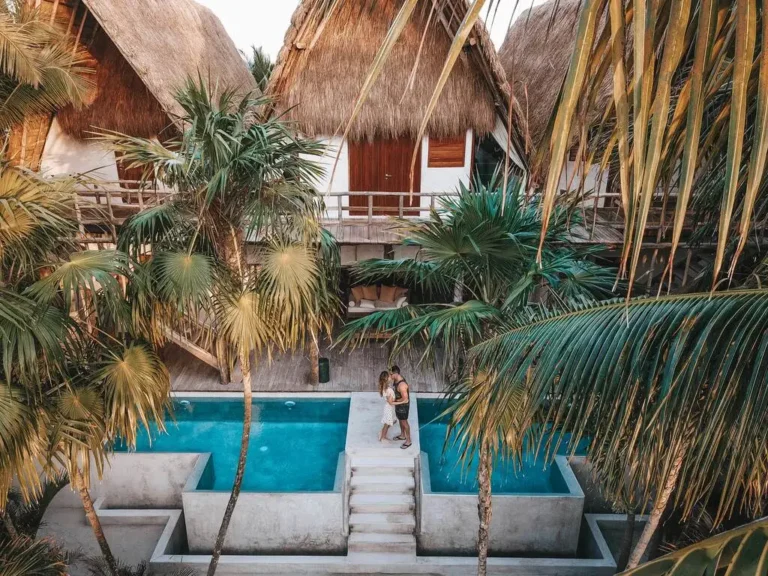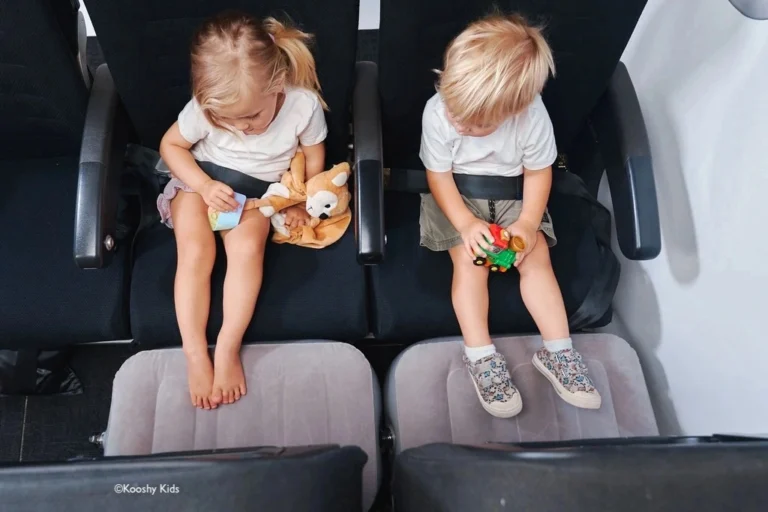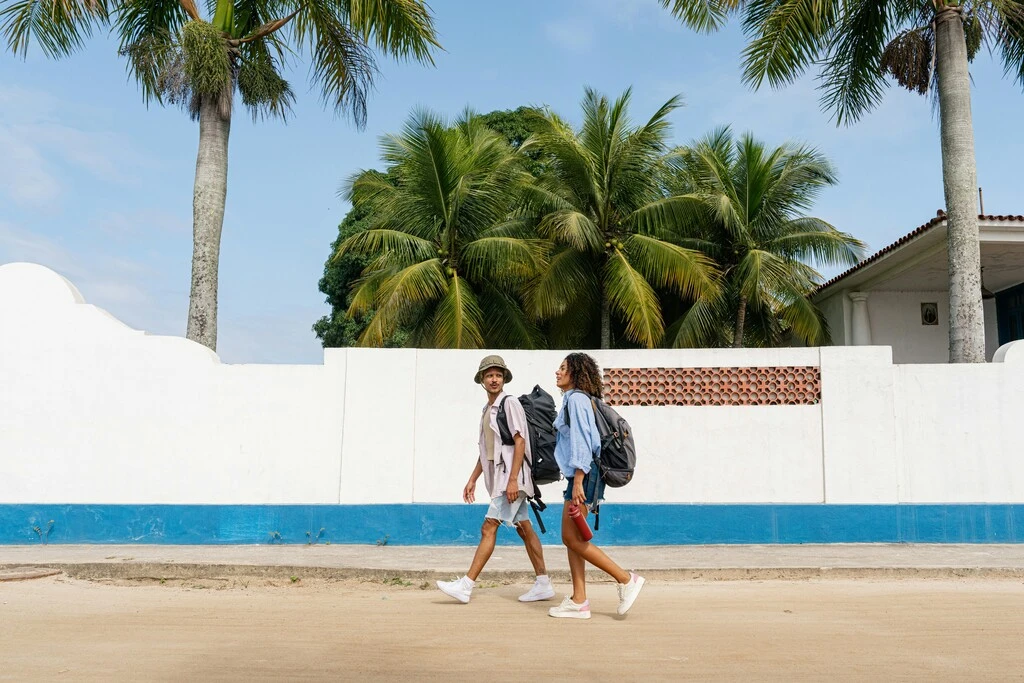Packing for Southeast Asia? Get ready for heat, humidity, and the occasional downpour. It will be hot, sticky, and sometimes soaking wet.
I’ve been living in Southeast Asia since 2019—mostly in Thailand, but also in Indonesia, Singapore, Malaysia, and Vietnam. I’ve figured out exactly what you need (and what you really don’t).
But I wasn’t always this smart. Back in 2014, on my first backpacking trip to Thailand, I horribly overpacked. I had a massive backpack filled with things I never used—jeans, fancy shoes, way too many toiletries.
Dragging all that stuff around in the heat? A nightmare.
Now, I know better! Let’s make sure you get it right the first time!
Scroll down for the whole packing list for Southeast Asia—it’s downloadable and FREE!
Packing List for Southeast Asia: Backpack, Daypack, or Suitcase?
First things first: Where will you put all your stuff in?
Well, I did a lot of backpacking in Thailand and India. I lugged my massive backpack through train stations, hoisted it onto tuk-tuks, and squeezed it into tiny hostel lockers.
At the time, I thought backpacks were the only way to travel.
But honestly? I quickly realized there’s no big advantage—at least not if you’re checking into hotels and using taxis.
Since becoming digital nomads in 2019, my family and I have ditched the backpacks and now only travel with suitcases and daypacks.
And it works perfectly! Here’s what to consider when choosing your luggage for Southeast Asia.
1. Backpacking Packs – Are They Worth It?
Backpacks make sense if you’re moving around a lot, staying in hostels, or taking public transport all the time. If you’re constantly hopping on motorbikes or trekking through rural areas, a travel backpack is a solid choice.
What to Look For:
✔ Front-Loading (Not Top-Loading) – Makes packing and unpacking easier.
✔ Lightweight & Water-Resistant – Humidity and rain can destroy cheap fabrics.
✔ Padded Straps & Hip Belt – Your back will thank you.
✔ Carry-On Size (If Possible) – Saves money on flights and avoids lost luggage.
💡 Pro Tip: If you’re flying budget airlines like AirAsia, check their carry-on size limits. Some are strict, others more relaxed.
2. Suitcase – The Better Choice for Most Travelers
If you’re staying in hotels, taking taxis, or traveling as a family, a suitcase is easier and more practical. No sweaty back, no awkward balancing act while pulling things out, and no struggling to stuff it into a tiny locker.
Best Suitcase Features:
✔ Spinner Wheels – Makes rolling over uneven streets much easier.
✔ Hard-Shell or Water-Resistant – Protects your stuff from tropical downpours.
✔ Expandable – Gives extra space for souvenirs (because you will shop).
💡 Pro Tip: Some places in Southeast Asia have bumpy roads or stairs with no elevators. A suitcase with sturdy wheels (not the tiny plastic ones) will last longer.
3. Daypack – The Everyday Essential
Whether you choose a backpack or a suitcase, a daypack is non-negotiable. You’ll use it for day trips, beach outings, and flights.
Best Daypack Features:
✔ Lightweight & Comfortable – You’ll carry it everywhere.
✔ Anti-Theft Features – Lockable zippers help in crowded places.
✔ Enough Space for Essentials – Water bottle, camera, sunscreen, snacks.
💡 Pro Tip: Pick a daypack that slides onto your suitcase handle for hassle-free airport travel.
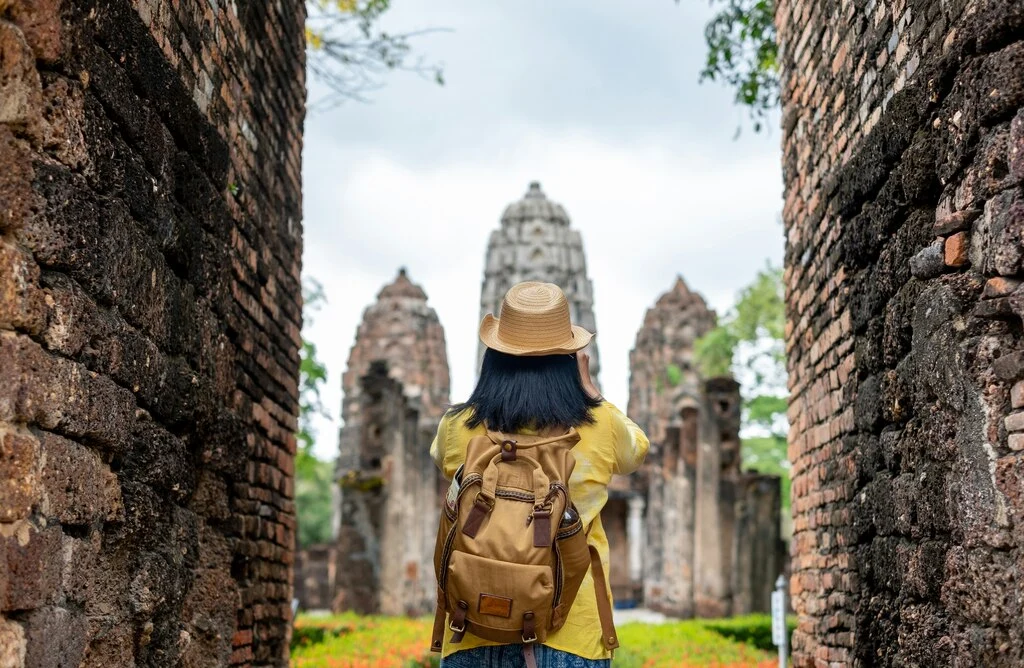
Packing List for Southeast Asia: The Clothing Essentials
Lightweight Tops and Bottoms
Hot. Humid. Sweaty. Southeast Asia’s weather is no joke. Breathable fabrics like cotton, linen, or quick-dry materials keep you cool. Pack a mix of t-shirts, tank tops, and loose-fitting pants or shorts.
Heavy denim? Leave it at home—it sticks to you like glue in the heat. Jean shorts, though, are totally fine.
💡 Pro Tip: In Southeast Asia, laundry services are everywhere—hotels, hostels, and street-side shops will wash and dry your clothes for around $1 per kg.
If you want to wash a few things yourself, a small travel detergent is handy.
Breathable Underwear
Go for lightweight, moisture-wicking fabrics like bamboo, merino wool, or quick-dry synthetics. They keep you fresh and dry, even in Southeast Asia’s heat.
Cotton? It soaks up sweat and stays damp—not ideal. Pack a few pairs of quick-dry undies instead.
Modest Attire for Temples
Temples are stunning, but they come with a dress code. Shoulders and knees need to be covered. A long skirt, loose pants, or a lightweight scarf will do the job.
No one wants to be turned away at the entrance because of shorts. At popular temples, you can often borrow a sarong, a kimono, or a shawl to cover up.
Swimwear
Beaches, waterfalls, infinity pools—you’ll need swimwear. Bring at least two, so you always have a dry one. Some islands are more conservative, so a cover-up is good to have, too.
I love my Kimono that I can always put on when buying a fresh coconut on the beach.
Rain Gear
Monsoon season is real. One minute, it’s sunny, the next, you’re drenched. A lightweight rain jacket or a cheap poncho (you can grab one at 7-Eleven) will save you.
Footwear
A pair of comfy walking shoes for city exploring and some flip-flops or sandals for beach days. Flip-flops also make temple visits easier since you’ll be taking your shoes off all the time.
I highly recommend plastic sandals or flip-flops—they’re waterproof, easy to clean, and won’t stay wet for hours after a sudden downpour.
For walking shoes, choose something with a bit of grip. Many hikes in Southeast Asia involve slippery trails or uneven paths, and basic sneakers won’t cut it.
A lightweight, breathable hiking shoe that doubles as a city sneaker is perfect.
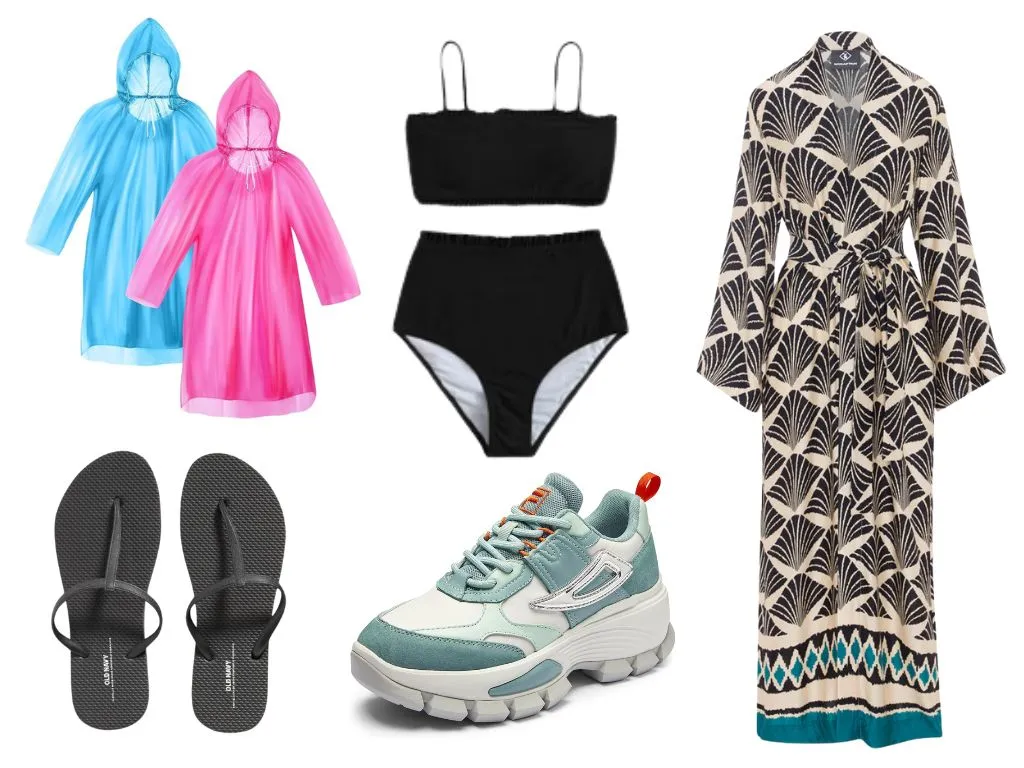
Packing List for Southeast Asia: Accessories
Sun Protection
The sun in Southeast Asia is intense. It will burn you faster than you expect. A good pair of sunglasses and a wide-brim hat will make your life more comfortable. We’ll talk about sunscreen later.
Dry Bag
Island hopping? Kayaking? Even just getting on a boat? A dry bag is a must. It keeps your phone, cash, and other valuables safe from splashes, sudden rain, or accidental dips in the water.
I’ve seen enough people ruin their phones to know this is worth packing.
💡 Pro tip: Don’t buy an expensive dry bag in your home country. Here in Southeast Asia they usually cost just a few dollars.
Microfiber Towel
Hotels and hostels provide towels, but they’re bulky and take forever to dry. A microfiber towel is lightweight, packs small, and dries super fast.
Perfect for beach days, unexpected swims, or just wiping off all the sweat from walking around in the heat.
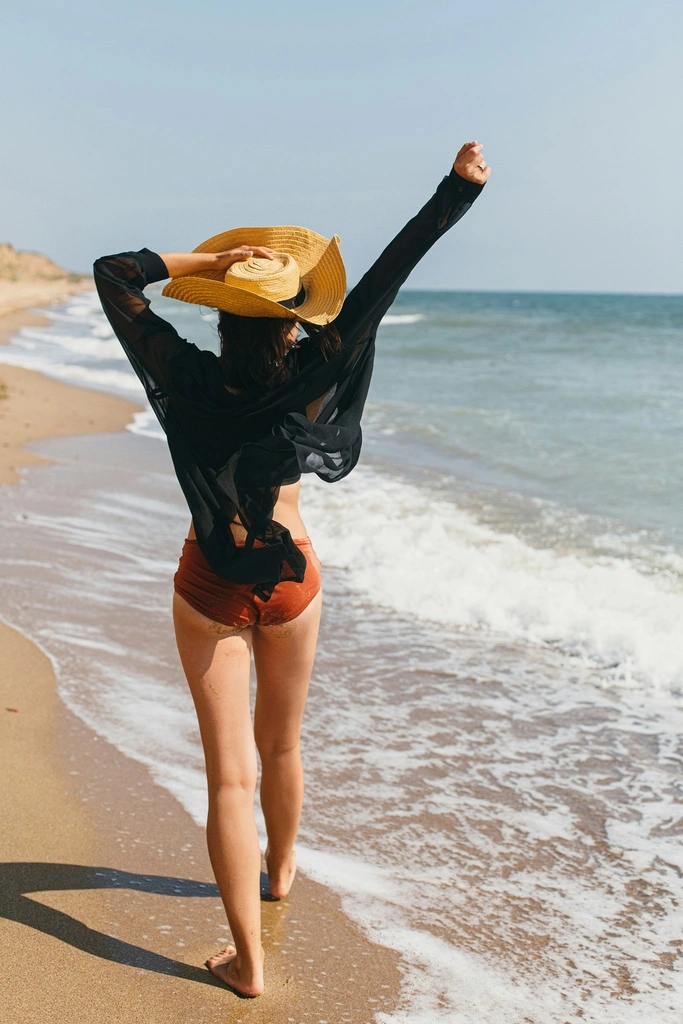
Packing List for Southeast Asia: Toiletries and Personal Care
Basic Toiletries
Keep it simple. Toothbrush, toothpaste, deodorant, and whatever else you need for daily hygiene. You can buy most things in Southeast Asia, but if you’re picky about brands, bring enough from home.
Sunscreen
The sun is brutal, and sunscreen is expensive in Southeast Asia—especially reef-safe options. High SPF (50+) is a must. If you’re heading to the islands, go for a reef-friendly brand to protect the ocean while protecting your skin.
💡 Pro Tip: Sunscreen in Southeast Asia often costs $15 or more for a small bottle. Bring some from home to save money!
Insect Repellent
Mosquitoes love warm, humid places—and they love travelers even more. A good insect repellent with DEET helps keep them away. If you prefer a natural option, citronella-based sprays work, but you might have to reapply more often.
💡 Pro Tip: The most effective mosquito repellent is the one sold locally. Don’t waste money on fancy brands from home—just buy it when you arrive.
First Aid Kit
Nothing fancy, just the basics. Band-aids, antiseptic wipes, and any personal medications you need. Stomach meds are a good idea—Southeast Asia’s street food is amazing, but your stomach might take some time to adjust.
Tissues & Wet Wipes
Many bathrooms in Southeast Asia don’t have toilet paper. You’ll find a water hose instead, which is great once you get used to it. But if not, a small pack of tissues in your bag is a lifesaver.
Wet wipes are another essential—they’re great for freshening up in the heat, wiping down sticky hands, or cleaning questionable restaurant tables.
💡 Pro Tip: You can buy tissues and wipes at any 7-Eleven, but having a pack ready in your daypack is always a good idea.
Makeup
Back in Europe, I was a full-on makeup girly. But in Southeast Asia? The heat and humidity made my routine impossible. Everything just melted off my face within minutes.
After years of trial and (very sweaty) error, I’ve cut it down to just three essentials: eyeliner, mascara, and eyebrow pencil. All waterproof, of course—because nobody wants raccoon eyes by lunchtime.
Packing List for Southeast Asia: Electronics
Power Bank
Google Maps, translation apps, and endless photos drain your phone fast. A good power bank keeps you powered up during long travel days. Some bus rides in Southeast Asia last forever, and not all have charging ports.
A high-capacity one (10,000mAh or more) is best, so you don’t run out of juice halfway through the day.
Universal Adapter
Southeast Asia has different plug types, and not every hotel or guesthouse will have what you need. A universal adapter saves you the headache of hunting for the right one.
Get one with multiple USB ports so you can charge everything at once.
Camera or Smartphone
A smartphone is enough for most travelers, but if you’re into photography, bring a lightweight camera. Just make sure you have enough storage or a cloud backup.
💡 Pro Tip: More valuables mean less freedom and flexibility—you’ll always have to worry about keeping them safe. If you don’t want the extra stress, stick to your phone!
SIM Cards & eSIMs
Staying connected is a game-changer in Southeast Asia. Wi-Fi is decent in most places, but having mobile data makes things way easier—whether you’re grabbing a Grab (Asia’s Uber), checking Google Maps, or translating a menu.
You have two options:
- Physical SIM cards – Super cheap and easy to get at airports, 7-Eleven, or mobile shops. Popular providers:
✔ Thailand: AIS, TrueMove, DTAC
✔ Vietnam: Viettel, Mobifone
✔ Indonesia: Telkomsel, XL Axiata - eSIMs – No need to swap SIM cards; just install it on your phone. I recommend Airalo—you can buy data before you even land.
💡 Pro Tip: Most prepaid SIMs come with generous data packages, but not much call credit. If you need to make local calls, top up a bit at a convenience store.
VPN for Online Security
Southeast Asia has solid Wi-Fi, but not all networks are secure. Plus, some banking sites, Netflix shows, and news websites may be blocked or restricted in certain countries.
A VPN (Virtual Private Network) keeps your connection safe and lets you access content like you’re back home. If you work online or manage sensitive accounts, a VPN is a must.
💡 Pro Tip: ExpressVPN and NordVPN work well in Southeast Asia.
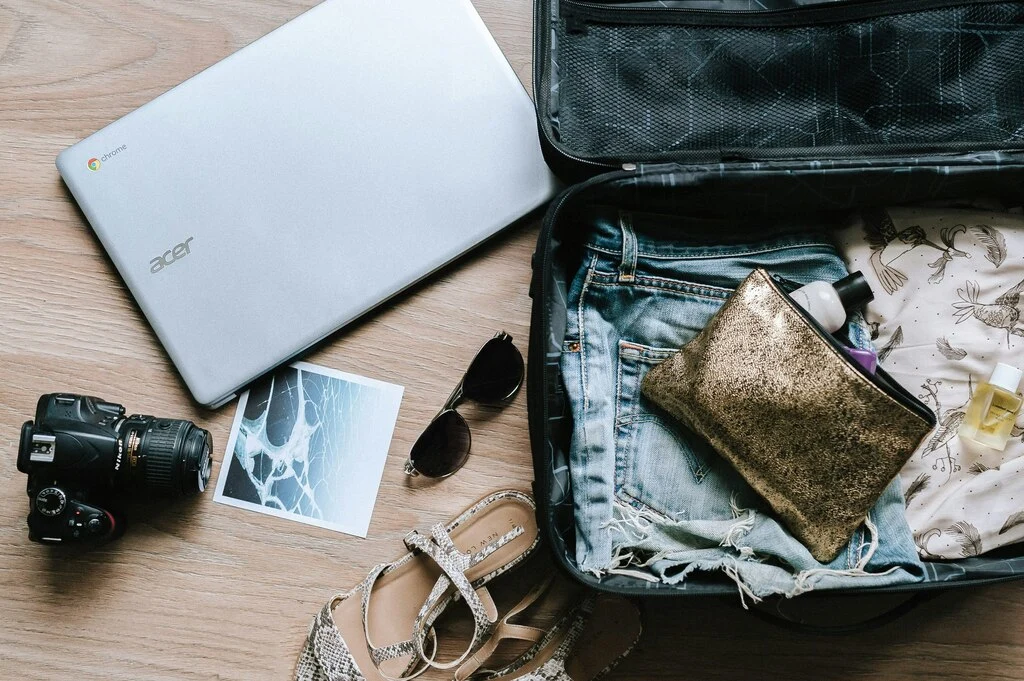
Packing List for Southeast Asia: Important Documents
Passport and Visas
Double-check that your passport is valid for at least six months beyond your travel dates. Some countries won’t let you in otherwise. Visa rules vary, so check in advance whether you need one and how long you can stay.
Travel Insurance Details
Nobody likes to think about things going wrong, but accidents happen. Travel insurance covers medical emergencies, lost luggage, and other surprises.
Carry a digital and physical copy of your policy, including emergency contact numbers.
Emergency Contacts
Save important numbers, like your country’s embassy, your travel insurance provider, and a trusted friend or family member back home.
Keep a written copy somewhere safe—phones get lost, stolen, or run out of battery at the worst moments.
💡 Pro Tip: Snap a photo of your passport, visa, bookings and insurance details. Store them in your email or cloud so you can access them anytime, even if your bag disappears.
Cash & ATMs
Southeast Asia is mostly cash-based—especially in markets, street food stalls, and small guesthouses. Some places accept cards, but don’t count on it.
ATM fees can be brutal, with charges of $5 or more per withdrawal.
To save money:
✔ Take out larger amounts at once.
✔ Use a Wise or Revolut card to avoid bad exchange rates.
✔ Look for Citibank or AEON ATMs—they have lower fees than others.
💡 Pro Tip: Always have some small bills handy for taxis, food stalls, and tips.
Packing List for Southeast Asia: Miscellaneous Items
Reusable Water Bottle
Staying hydrated is key in Southeast Asia’s heat. A reusable water bottle saves you money and cuts down on plastic waste. Many hotels and cafés offer refills, so you don’t have to keep buying single-use bottles.
Packing Cubes
Packing and unpacking constantly? Packing cubes keep your stuff organized and make life easier. No more digging through a messy backpack to find that one t-shirt at the bottom.
Earplugs & Sleep Mask
Southeast Asia is not the quietest place to sleep. You’ll hear:
🚗 Traffic at all hours
🐓 Roosters that don’t understand time
🎶 Loud music from bars or temples
Earplugs are a lifesaver on night buses, trains, or in noisy hostels. A sleep mask also helps—especially if you end up in a hotel room with thin curtains and neon lights outside.
💡 Pro Tip: Wax earplugs work best for blocking sound. For general everyday noise and parties, I use Loops.
Small Lock for Luggage
A small lock keeps your bag secure on buses, in hostels, or at hotel storage. TSA-approved locks work for flights, but any sturdy lock does the job.
👉 You might also like:
– What to Bring on a Plane: My 33 Carry-On Bag Essentials
– The Best Months to Visit Thailand
– What to Wear in Thailand? 20 Do’s and Don’ts
– The Best Time to Travel to Southeast Asia
Download your FREE Packing List for Southeast Asia here 👇
Click below to download a printable checklist with everything you need—no fluff, just the essentials.
DownloadWeather in Southeast Asia: What to Expect
Southeast Asia is hot and humid year-round. Temperatures range from 77°F to 95°F (25°C to 35°C), and humidity makes it feel even hotter, especially in coastal and jungle areas.
There are two main climate zones:
- Mainland Southeast Asia (Thailand, Vietnam, Cambodia, Laos, Myanmar)
- Maritime Southeast Asia (Indonesia, Malaysia, the Philippines, Singapore, Timor-Leste)
Seasons in Southeast Asia:
- Dry season (November – April): Sunny, warm, and the best time for travel. Expect higher prices and more crowds.
- Rainy season (May – October): Heavy rain, high humidity, and occasional flooding. Rain showers are often short, with sunshine in between. Some islands and hiking trails may be inaccessible.
Shoulder season (April – May & September – October) is a great middle ground. Fewer tourists, lower prices, and decent weather in most places.
Final Thoughts on the Ultimate Packing List for Southeast Asia
Pack light, pack smart, and make your trip easier. Dragging a heavy backpack through Southeast Asia’s heat isn’t fun. Bring only what you need, and skip the “just in case” extras. If you forget something, you can buy it locally.
I hope this guide has been helpful to you!
What has been your absolute must-have for traveling in Southeast Asia? What’s the one item you’d never leave without?
Please let me know in the comments!
Thank you for reading and for making me part of your day! Yours, Lulu
FAQ on the Ultimate Packing List for Southeast Asia
Do I need to bring a mosquito net?
Most hotels and hostels provide one, but if you’re staying in remote areas or budget hostels, bringing a mosquito net can be a great idea to avoid dengue fever and bites.
What’s the best footwear for Southeast Asia?
Flip-flops are a must for the beach, temples, and boat trips. A pair of breathable sneakers or athletic wear shoes with good grip are the best things for city exploring and hiking in northern Thailand or Vietnam.
How do I protect my valuables while traveling?
Use a small lock for your main backpack or suitcase. An anti-theft daypack is also a great option for big cities where pickpocketing can be an issue.
Is travel insurance necessary?
Absolutely. Medical costs can add an extra cost, and hospitals in major cities like Bangkok or Ho Chi Minh City are expensive. Travel insurance covers unexpected issues like accidents, lost luggage, and illnesses.
What’s the best way to stay connected in Southeast Asia?
A local SIM card is the easiest way to have data in different countries. Providers like AIS in Thailand, Viettel in Vietnam, and Telkomsel in Indonesia offer affordable data packages. An eSIM is a better idea if you want to set up mobile data before arrival.
What should I pack for religious sites like Angkor Wat?
Wear long pants or a long skirt and a long-sleeved shirt to cover your shoulders.
How can I avoid overpacking?
Stick to packing tips like using packing cubes, rolling your clothes, and avoiding the “just in case” mindset. South-East Asia packing lists should be simple—you can buy most things there!
Backpack or suitcase – which is better for Southeast Asia?
It depends on your style of travel. A main backpack is a great option if you’re backpacking through remote areas, taking public transport, or staying in hostels. However, if you’re traveling with kids, staying in hotels, or mostly using taxis, a suitcase is the best option—it saves a lot of time and effort.
What are the best travel backpacks for Southeast Asia?
The best backpack is front-loading (not top-loading) for easy packing. Look for adjustable, padded straps, a rain cover, and a size that fits your frame. The Osprey Farpoint 40 and Nomatic Travel Pack are great options. For digital nomads, a minimalist carry-on backpack like the Tortuga Setout works well.
How much clothing should I bring?
Not much! Pack light. Laundry services are everywhere and cost around $1 per kg. You only need a few long-sleeved tops for religious sites like Angkor Wat or Chiang Mai’s ancient temples. Denim shorts are fine, but avoid packing too much clothing—you won’t use it in the humid weather.
Do I need long-sleeved shirts in Southeast Asia?
Yes! Even in the heat, long-sleeved shirts are essential for religious sites, protecting against sunburn, and keeping mosquitoes away. A lightweight linen or cotton shirt is best.
Are credit cards widely accepted in Southeast Asia?
Not everywhere! Some hotels and big restaurants accept credit cards, but street food vendors, markets, and small businesses only take local currency (cash). A backup stash of USD or Euros is helpful in case ATMs don’t work.
What’s the best time of year to visit Southeast Asia?
The best time of year is the dry season (November to April). However, if you want fewer crowds and cheaper prices, the shoulder season (April-May & September-October) is a great place to start.
Just a heads up: some links in the article “The Ultimate Packing List for Southeast Asia” on Nomadmum.com are affiliate links. This means if you click and buy, I might earn a small commission at no extra cost to you.


